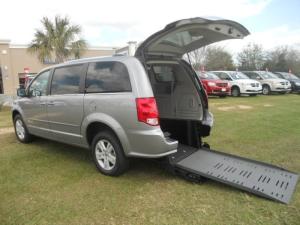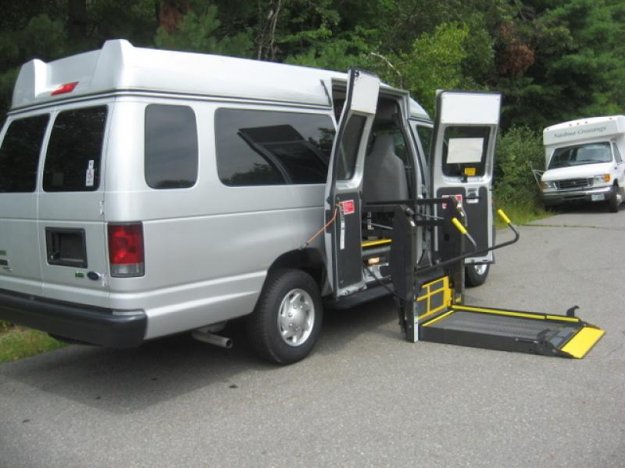Specially Equipped Vans Offer Convenient Transportation For People With Limited Mobility
Most wheelchair vans require more attention than the average vehicle when it comes to maintenance. Owners must monitor the suspension and tires on a regular basis because the heavy hydraulic system and lift put a lot of strain on these parts. Tires should be inspected on a monthly basis for wear and nails or other sharp objects that may be stuck in the rubber. Rotating the tires several times a year will help the tires wear evenly and eliminate the risk of a blow out. A professional should look at the shock absorbers every six months to check on the wear because they are responsible for supporting so much weight. For the best performance, shocks must be replaced as soon as they are worn. Handicap vans with life mechanisms need lubrication and enough hydraulic fluid to work properly when lifting a wheelchair into the vehicle.
 An accessible minivan offers people with limited mobility the freedom to travel around comfortably and safely. The owner of a commercial wheelchair van will prolong its lifespan with routine maintenance. Conversion vans are like any other vehicle when it comes to regular maintenance. Vehicle fluid tanks must be full and checked on a weekly basis. Vehicle owners should also inspect all door latches to make sure they are working properly. Taking the time to take care of these small details will allow the owner to repair a small problem before it gets to be a major problem.
An accessible minivan offers people with limited mobility the freedom to travel around comfortably and safely. The owner of a commercial wheelchair van will prolong its lifespan with routine maintenance. Conversion vans are like any other vehicle when it comes to regular maintenance. Vehicle fluid tanks must be full and checked on a weekly basis. Vehicle owners should also inspect all door latches to make sure they are working properly. Taking the time to take care of these small details will allow the owner to repair a small problem before it gets to be a major problem.
Regular brake inspections will ensure mobility vans are safe to operate. Experts recommend changing the oil in an accessible vehicle every 3,000 miles.
Accessible vans are available in a variety of styles and sizes to suit any need. They are extremely convenient for people who need a wheelchair to get around because they have roomy interiors and handy machinery that will lift the wheelchair into the vehicle with the push of a button. As long as the vehicle is properly maintained, the owner will get years of service from the investment.















